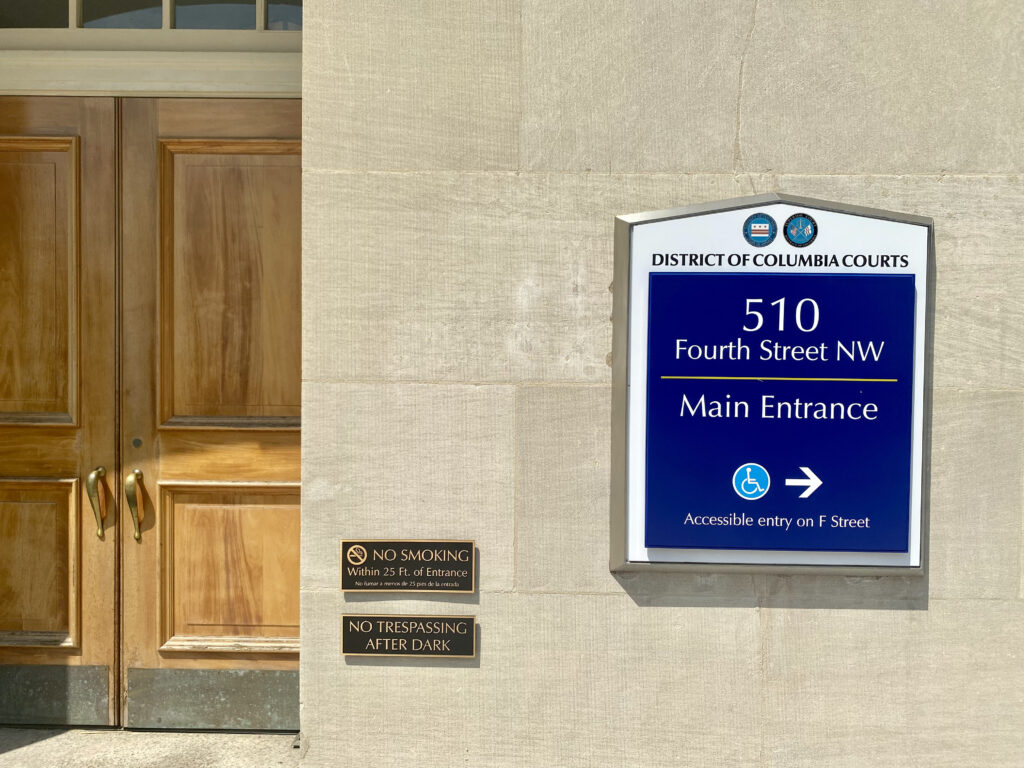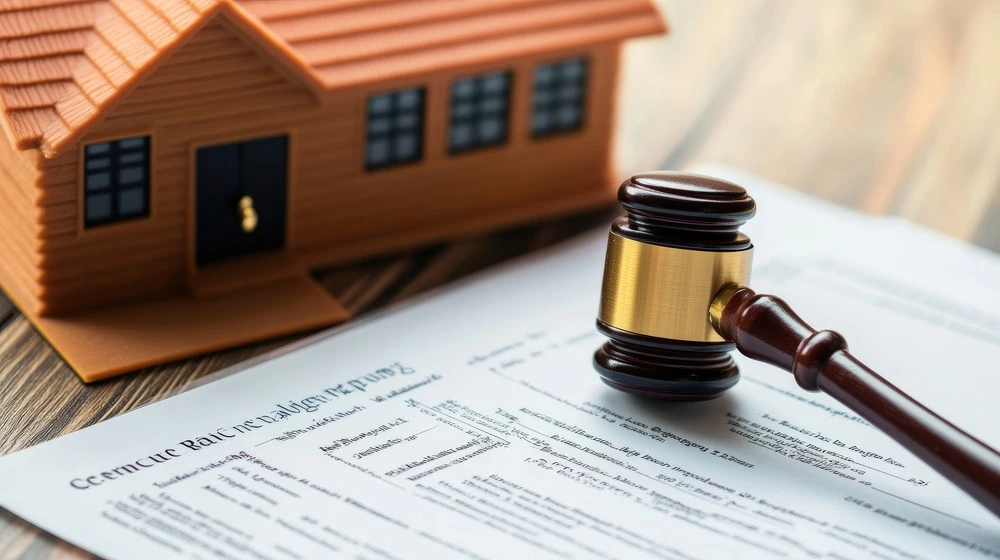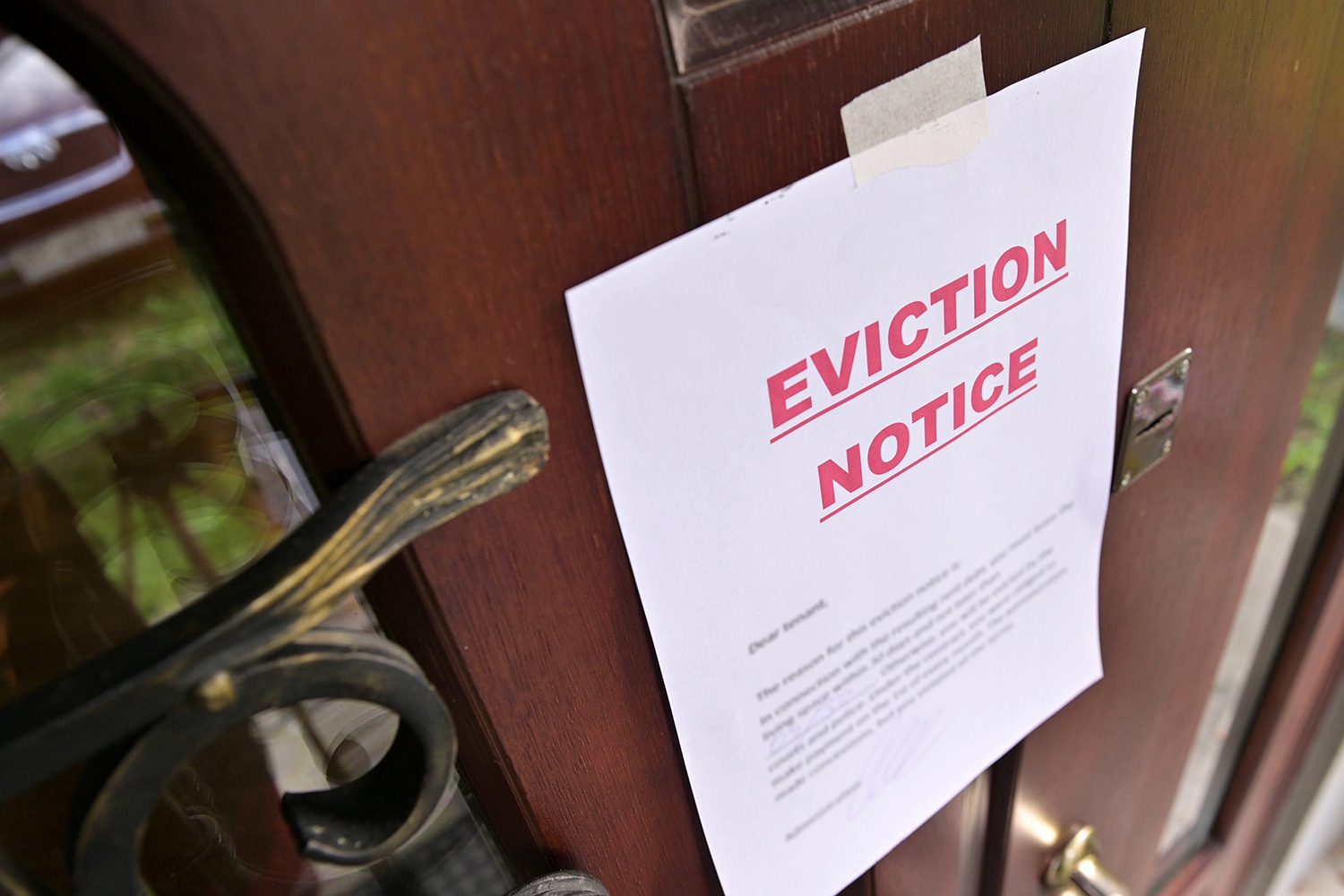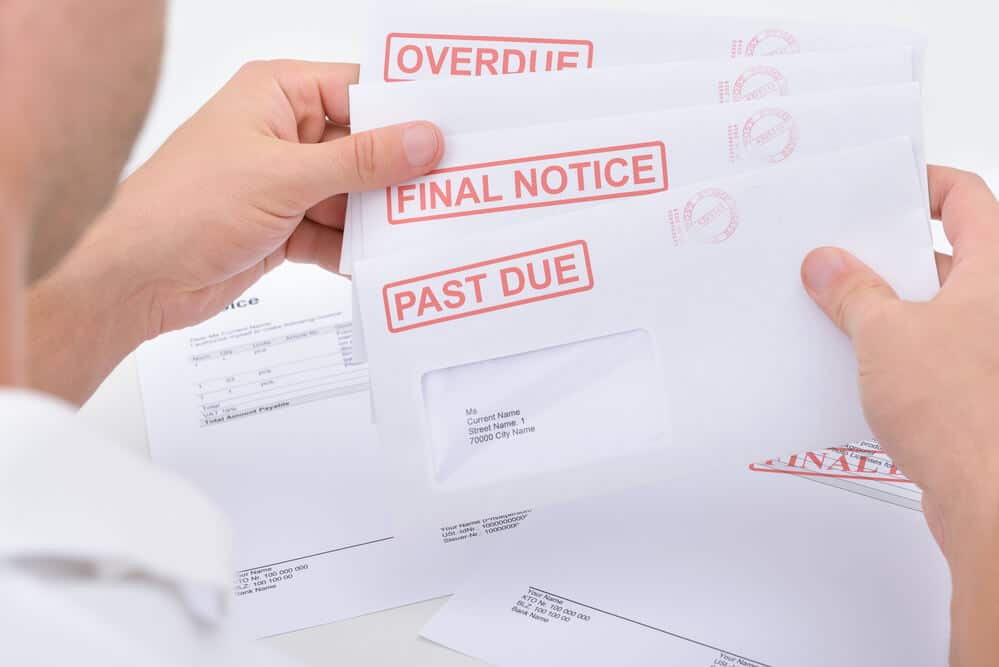The eviction process in the District of Columbia is a serious legal procedure that landlords must follow precisely to regain possession of their rental property. With the introduction of the RENTAL Act of 2025, there are new legal requirements, timelines, and provisions that significantly impact how landlords can proceed.
This comprehensive guide by LeaseRunner will walk you through the essential steps, legal reasons for eviction, and the critical changes you need to know to ensure your eviction process is both legal and efficient.
Key Eviction-Related Provisions of the 2025 RENTAL Act in Washington, D.C.
The Rebalancing Expectations for Neighbors, Tenants, and Landlords (RENTAL) Act of 2025 is a pivotal legislative package in Washington, D.C., aimed at modernizing and stabilizing the city's housing market. For landlords, the RENTAL Act brings significant, pro-landlord changes to the eviction process in the District of Columbia, making it more efficient and predictable.

For landlords, the RENTAL Act brings significant changes to the eviction process in the District of Columbia
Emergency Rental Assistance Program (ERAP) Reforms
A key area of reform is the Emergency Rental Assistance Program (ERAP). Under the new provisions, submitting an ERAP application no longer automatically pauses an eviction case. This is a major shift from previous regulations. Instead, a judge now has judicial discretion to decide whether to stay an eviction based on the specifics of the case.
Furthermore, tenants are now required to provide documented proof of eligibility and a verifiable housing emergency, as self-attestation is no longer sufficient. This change in the eviction laws is designed to create a more transparent and efficient process, giving landlords a clearer path to resolving non-payment issues and reducing the unpredictable delays that have characterized court proceedings in the past.
Streamlined Court Processes and Timelines
The RENTAL Act aims to return court processes to a more predictable rhythm, significantly impacting the eviction process in the District of Columbia. The legislation proposes a number of changes to help landlords address overdue rent and lease violation issues more quickly. :
- Reducing the timeframe for a landlord to send a past-due notice to a tenant from 30 days to 10 days after a missed payment.
- Shortening the period between serving a summons and an initial court hearing from 30 days to as early as 14 days.
- Requiring an initial hearing for non-payment cases to be scheduled within 45 days of the complaint being filed.
Strengthening Tenant Safety Protections
While many provisions of the RENTAL Act favor landlords, the legislation also strengthens tenant protections in cases of serious safety concerns. Landlords are now empowered to take swift action against tenants involved in violent crimes.
Under the new law, if a tenant is arrested or charged with a violent offense that occurred in or near the property, a landlord can serve a shortened 10-day notice to vacate. An eviction hearing for such cases is required to be scheduled within 20 days of the complaint being filed. This provision offers a faster way for landlords to protect their properties and other tenants from severe threats.
What Are Legal Reasons for Eviction in Washington, D.C.?
Before a landlord can begin the official eviction process in the District of Columbia, understanding what qualifies as a legal cause for eviction is essential. It ensures you're not violating tenant rights and to avoid delays or dismissals in court.

The most frequent reason for eviction is a tenant's failure to make a timely rent payment
Nonpayment of Rent
If a tenant fails to pay rent on time, the landlord may serve a 30-day Notice to Quit, giving the tenant an opportunity to either pay the overdue amount or move out. Landlords can lower their risk by checking for a history of non-payment or past evictions before a lease is signed
Lease Violations
A lease violation can include actions like unauthorized occupants, pets in a no-pet unit, property damage that goes beyond normal wear and tear, or illegal activity on the premises. These are considered “for cause” reasons and generally require a 30-day notice to allow the tenant to correct the issue. If the issue isn’t resolved within the notice period, the landlord may proceed with an unlawful detainer action.
Owner Move-In or Substantial Renovation
Landlords may legally evict tenants if they plan to either move into the rental property themselves or perform substantial renovations. However, this process requires strict notice timelines—often 90 days—and may trigger relocation assistance requirements, depending on the situation and length of tenancy.
Illegal Activity
If a tenant engages in illegal activity—such as drug distribution—or causes serious disruption to neighbors or the community, this can be grounds for immediate eviction. In these cases, the notice period may be shortened or waived entirely, depending on the severity.
How Do I Serve a Legal Eviction Notice in D.C.?
Properly serving an eviction notice is a critical first step in the eviction process in the District of Columbia. If the notice is delivered incorrectly or lacks the required details, your case can be rejected or delayed during court procedures.

The notice must be in writing and clearly state the reason for the eviction
Choose the Correct Notice Type
Before serving anything, landlords must determine the right type of notice based on the reason for eviction:
- 30-Day Notice to Quit: Most common, used for nonpayment of rent, lease violations, or tenant misconduct.
- 90-Day Notice: Typically used for ending a month-to-month tenancy without tenant fault.
- 120-Day Notice: May apply in cases of substantial renovations or owner move-in situations.
Deliver the Notice Properly
In D.C., eviction notices must be served using one of the legally accepted methods:
- Personal delivery to the tenant.
- Posting the notice on the door and mailing a copy.
- Certified mail with return receipt (preferred for record-keeping).
Document the Delivery for Court Use
Landlords must retain proof that the notice was served correctly. This may include:
- A signed affidavit of service.
- A photograph of the notice posted on the door.
- A certified mail receipt.
This documentation is vital once your case enters the Landlord-Tenant Court, as judges often require clear evidence before moving forward with a judgment for possession.
Step-by-Step Eviction Process in D.C.
The eviction process in the District of Columbia is highly structured, requiring strict compliance with local legal procedures. Whether you’re evicted for nonpayment of rent, a lease violation, or another lawful reason, each stage must be completed correctly for your case to succeed in Landlord-Tenant Court.
Step 1 – Serve a Legal Notice to the Tenant
The process begins when the landlord serves a written notice, such as a 30-Day Notice to Quit for nonpayment or other violations. This notice must clearly state the reason for eviction and give the tenant time to either correct the issue or vacate the rental property.
Under D.C. law, landlords must also provide information on rental assistance programs like ERAP and include a copy of the Tenant Bill of Rights with the notice. Failure to follow this step correctly may void your case entirely.
Step 2 – File a Complaint with the Court
If the tenant doesn’t comply within the notice period, the landlord can file a Complaint for Possession with the D.C. Landlord and Tenant Branch. This begins the formal unlawful detainer case.
You’ll need to submit:
- A copy of the lease agreement
- A copy of the notice and proof of service
- Any required ERAP documentation
Filing fees apply, and incomplete filings will delay the case or result in rejection.
Step 3 – Court Serves the Tenant
Once your complaint is accepted, the court arranges for the tenant to be officially served with the Summons and Complaint. Service is typically done by a process server, special process officer, or the U.S. Marshals.
The summons will include a court date and inform the tenant of their rights, including the right to seek legal aid, respond to the complaint, or appear in court to contest the eviction.
Step 4 – Tenant Responds or Appears in Court
At this stage, the tenant may:
- File a written response (called an "Answer")
- Appear in person to dispute the eviction
- Request mediation or raise defenses
Common defenses include improper notice, failure to follow court procedure, uninhabitable living conditions, or violations of tenant protections. The court may offer mediation as an alternative to trial. If no settlement is reached, the case proceeds to a hearing.
Step 5 – Court Issues a Judgment for Possession
If the court finds in favor of the landlord, it will issue a judgment for possession. This gives the tenant a set number of days—typically 3 to 7 days—to vacate the unit voluntarily.
If the tenant fails to move out by the deadline, the landlord must request a Writ of Restitution to proceed with the physical eviction. Self-help evictions (i.e., changing locks yourself) are illegal in D.C.
Step 6 – U.S. Marshals Conduct the Eviction
The final step is the physical removal of the tenant, carried out by the U.S. Marshals Service. The landlord must coordinate with the Marshals to schedule the eviction, and a representative must be present during the removal.
Only the Marshals can enforce the writ—landlords are strictly prohibited from removing a tenant themselves. Once the eviction is completed, the rental property is legally returned to the landlord’s possession.
Eviction Timeline and Costs in D.C.
The eviction process in the District of Columbia can take anywhere from a few weeks to several months. For landlords, understanding both the estimated timeline and financial burden is key to managing expectations and protecting their landlord rights.
Required Documents for D.C. Evictions
When pursuing the eviction process in the District of Columbia, landlords must submit specific documentation to comply with local housing laws. These documents help establish the legal basis for the eviction and protect both landlord rights and tenant rights.

Without the proper paperwork, a landlord's claim for possession may be dismissed
1. Notice to Quit or Cure
This is the initial written notice served to the tenant, depending on the reason for eviction.
- For nonpayment of rent, it’s usually a 30-day Notice to Cure or Vacate.
- For lease violations, a 30-day Notice to Correct or Vacate is standard.
- If the lease has ended, a 30- or 60-day Notice to Vacate may apply.
2. Proof of Rent Payment History
In cases involving nonpayment of rent, landlords should prepare a clear record of rent charges and payments (or missed payments). This evidence supports the claim that the tenant failed to meet rental obligations. A rent ledger, account summary, or even canceled checks may be required by the court to validate the claim.
Closely related to proof of rent payment history, the security deposit serves as financial protection for landlords but must be handled according to strict legal standards. Explore full guide about Washington D.C Security Deposit for a detail information about required document.
3. Copy of the Lease Agreement
Landlords must submit a signed lease agreement—whether written or electronic—to prove the legal terms between both parties.
This document establishes:
- The rental amount
- Duration of tenancy
- Grounds for termination
- Responsibilities related to landlord rights and tenant obligations
4. Certificate of Service
This proves that the notice was properly delivered to the tenant, using legally acceptable methods (e.g., personal delivery, certified mail, or posting). Without this, the case could be dismissed—even if the tenant is clearly in the wrong. The Certificate of Service ensures that due process is followed during the eviction process in the District of Columbia.
5. Summons and Complaint
Once the notice period expires without tenant compliance, landlords file an official Complaint for Possession of Real Property along with a Summons.
This begins the formal court eviction process. The complaint should outline:
- The reason for eviction
- The rental property address
- The tenant's name
- Requested remedies (usually possession of the unit)
6. Registration and Licensing Documents (if applicable)
In D.C., landlords must register rental properties with the Rental Accommodations Division (RAD). If the property isn’t properly registered or exempted, it may delay or invalidate the eviction. This step reinforces the landlord’s compliance with housing regulations and is crucial when asserting landlord rights during the process.
Common Landlord Mistakes to Avoid in D.C.
Even when a landlord has legal grounds, small missteps can complicate the eviction process in the District of Columbia. Below are some common mistakes to avoid.

The eviction process in District of Columbia is fraught with potential pitfalls for landlords
1. Failing to Provide Proper Notice
In D.C., the law is strict about the type and timing of notices. Whether it's a 30-day notice for nonpayment of rent or a 90-day notice for end-of-lease, the wrong notice—or using the wrong delivery method—can delay or dismiss your case entirely.
2. Skipping the Rental Registration Requirement
Before initiating the eviction process, your rental unit must be registered with the D.C. Department of Housing and Community Development. Skipping this step invalidates your legal standing in court.
3. Not Keeping Accurate Rent Payment Records
Landlords should keep detailed records of rent payment history. Without clear proof of nonpayment, courts may rule in favor of the tenant.
4. Attempting "Self-Help" Eviction
Locking a tenant out, shutting off utilities, or removing belongings without a court order is illegal in D.C. This can lead to penalties and even tenant lawsuits. Always go through the court process.
5. Ignoring Tenant Rights or Local Rent Control Laws
Washington, D.C., has strong tenant protections and rent control laws. Violating these rights—such as by raising rent improperly or evicting without cause—can not only halt the eviction process in the District of Columbia, but also result in fines.
6. Improper or Incomplete Filing of Court Documents
Missing documents or incorrect details in your eviction complaint can cause the case to be delayed or dismissed. Double-check all paperwork before filing with the Landlord and Tenant Branch of the D.C. Superior Court.
Conclusion
The eviction process in the District of Columbia is strict, highly regulated, and designed to protect both tenant rights and landlord responsibilities. Understanding the required notices, legal filings, and common pitfalls can help landlords avoid costly delays. Whether you're managing rent nonpayment or lease violations, it's essential to follow each step with precision and proper documentation.
Services like LeaseRunner can help landlords stay compliant by offering lease templates and legal updates tailored to D.C. rental laws. In a city where even a minor misstep can delay or void an eviction, preparation is everything.
FAQs
1. How long does the eviction process take in Washington, D.C.?
It typically takes 2–4 months, depending on the complexity of the case and court scheduling. If the tenant contests the eviction or files motions, it may take longer.
2. Do landlords need a specific reason to evict a tenant in D.C.?
Yes. D.C. requires landlords to have one of the 10 lawful reasons for eviction, such as nonpayment of rent, lease violations, or the owner reclaiming the unit for personal use.
3. Is a written lease required for eviction in D.C.?
Not always. Even without a written lease, tenants are still protected under D.C. rental laws. However, having a written agreement makes the eviction process easier to enforce.
4. Can landlords evict tenants in D.C. without going to court?
No. All evictions must go through the D.C. Superior Court. Self-help evictions (changing locks, removing belongings) are illegal.
5. What happens after a landlord wins an eviction case?
The landlord must request a Writ of Restitution, and the U.S. Marshals Service will schedule a supervised eviction. The tenant must be given 14 days’ notice before physical eviction.



